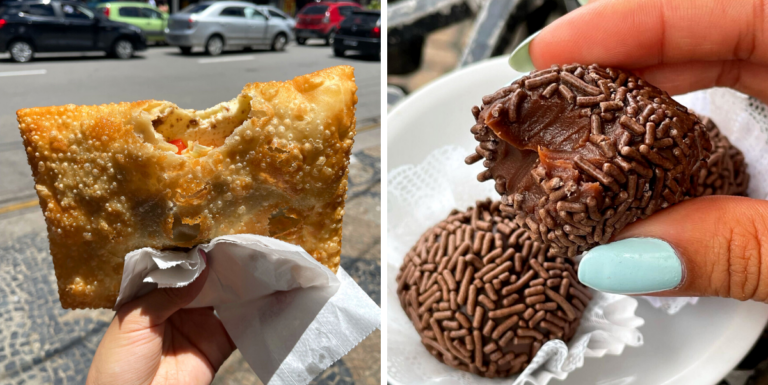Introduction: Brazilian cuisine
Brazilian cuisine is a diverse blend of indigenous, African, and European culinary traditions that have evolved over centuries. The country’s vast size and regional variations have given rise to a multitude of dishes that are unique to different parts of the country, making it one of the most varied and fascinating cuisines in the world.
Overview of Brazilian cuisine
Brazilian cuisine is characterized by its bold flavors, vibrant colors, and generous use of spices and herbs. It features a wide variety of meat dishes, including beef, pork, and chicken, as well as seafood and fish. Rice and beans are staples of the Brazilian diet, and are often served alongside meat dishes. Other popular Brazilian dishes include feijoada (a hearty stew made with black beans and various cuts of meat), moqueca (a seafood stew made with coconut milk and spices), and churrasco (barbecued meat skewers).
Ingredients commonly used in Brazilian cuisine
Brazilian cuisine makes use of a wide range of ingredients, many of which are native to the country. These include cassava (a root vegetable), coconut milk, palm oil, and various types of seafood. Other common ingredients include rice, beans, beef, pork, and chicken. Spices and herbs such as cumin, coriander, and parsley are also widely used.
Cultural influences on Brazilian cuisine
Brazilian cuisine has been influenced by a variety of cultures over the years, including the indigenous peoples of Brazil, as well as Portuguese, African, and Italian immigrants. African influences are particularly evident in the cuisine of Bahia, a region known for its spicy, seafood-based dishes. Italian influences can be seen in the use of pasta in some Brazilian dishes, while Portuguese influences are evident in the use of ingredients such as codfish and olive oil.
Religious dietary restrictions in Brazil
Brazil is a predominantly Catholic country, but there are also significant populations of Protestants, Jews, Muslims, and followers of Afro-Brazilian religions such as Candomblé and Umbanda. Many of these religions have dietary restrictions that are observed by their followers. For example, Jews and Muslims do not eat pork, while some Protestant denominations discourage the consumption of alcohol. Hindus and Buddhists are also present in Brazil, and their dietary restrictions may include avoiding beef or other meats.
Vegetarian and vegan options in Brazilian cuisine
Although Brazilian cuisine is known for its meat dishes, there are many vegetarian and vegan options available. Vegetarian dishes include feijão tropeiro (a bean and vegetable stew), vatapá (a dish made with bread, coconut milk, and vegetables), and acarajé (a fried bean cake). Vegan options include plant-based versions of traditional Brazilian dishes, such as feijoada made with tofu instead of meat.
Allergies and intolerances in Brazilian cuisine
Common food allergies and intolerances (such as lactose intolerance) are taken into account in Brazilian cuisine. Many restaurants and food vendors offer gluten-free options, and soy milk and other plant-based milks are widely available as alternatives to dairy milk.
Conclusion: Brazilian cuisine and dietary restrictions
Despite its reputation for meat-heavy dishes, Brazilian cuisine offers a wide range of options for people with dietary restrictions. From vegetarian feijoada to gluten-free churrasco, there is something for everyone in Brazil’s diverse culinary landscape. Whether you are a meat-lover or a vegan, there is no shortage of delicious and exciting dishes to try in this vibrant and colorful cuisine.

